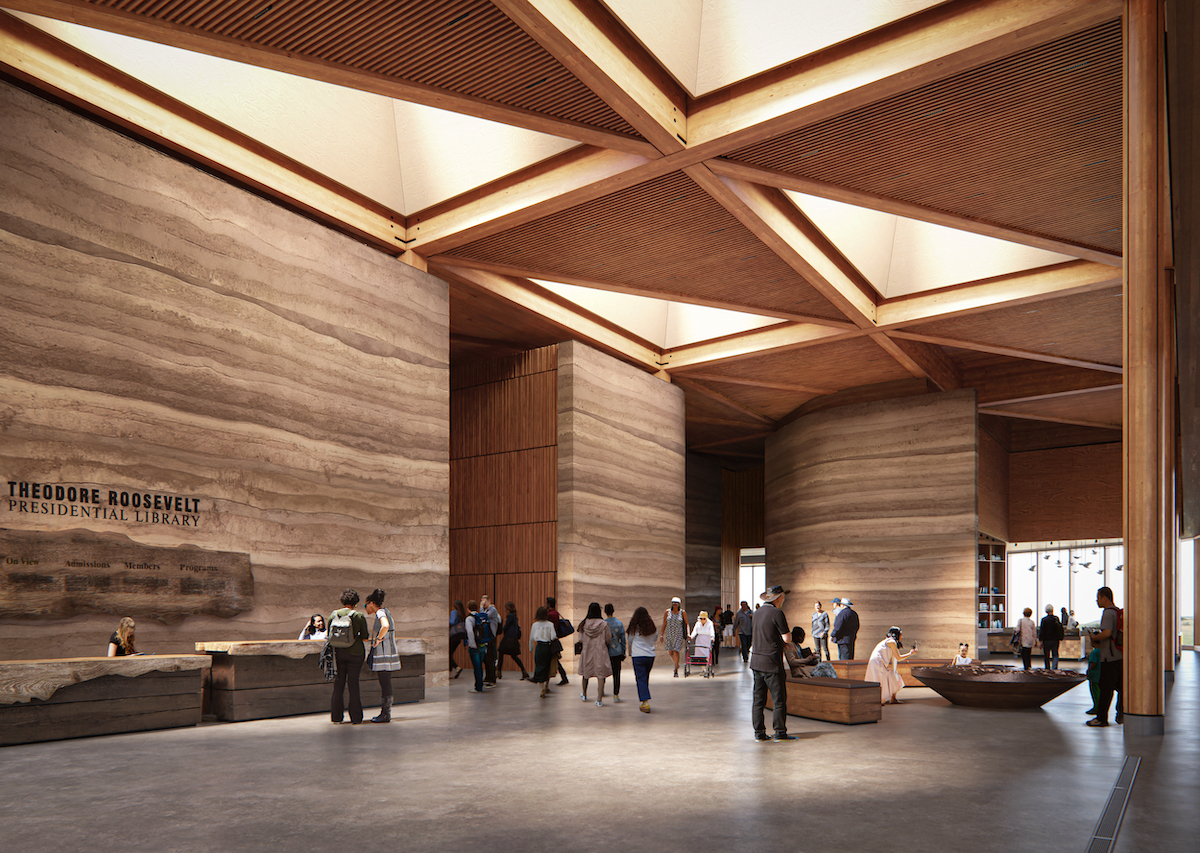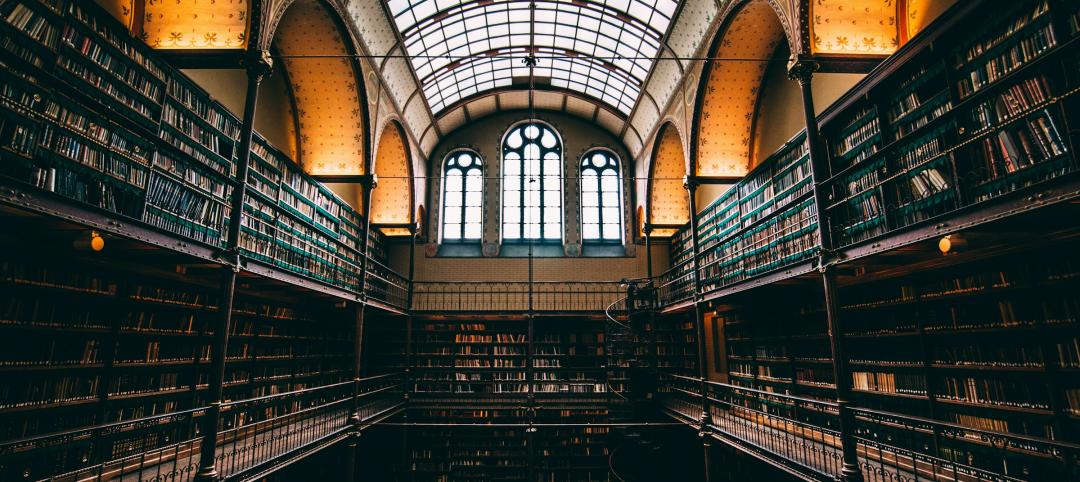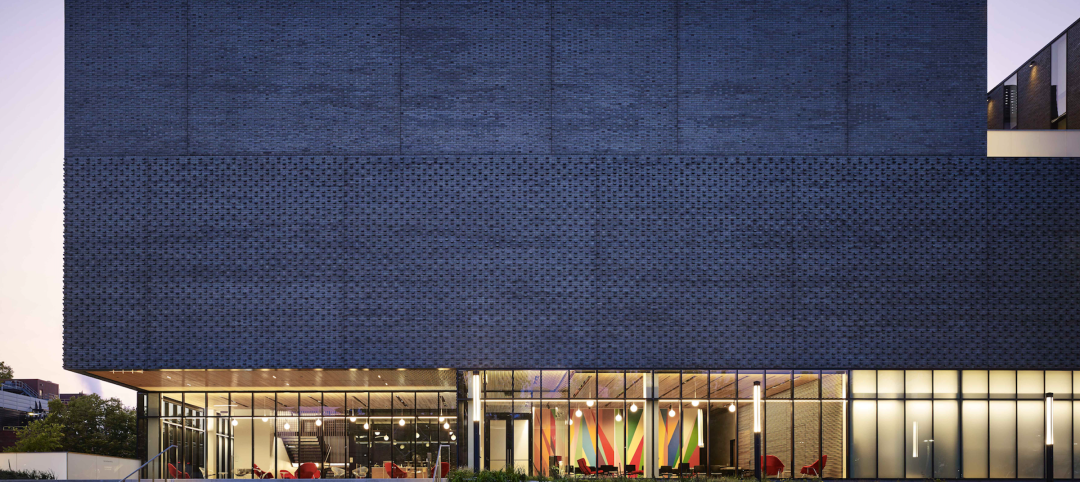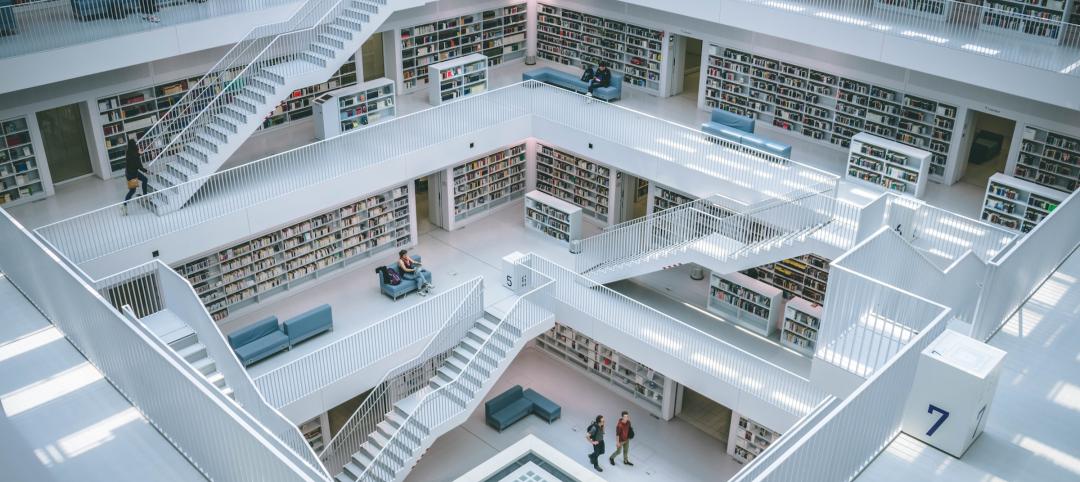The need for change is more pressing than ever. Today, weather events are more intense, more damaging, and more disruptive than ever. Unless we change business as usual, these impacts will increase at a pace out of our control.
Changing business as usual requires employing seven key ingredients in our business strategy, practices, and projects at the start – going beyond zero to achieve positive impact. That is the approach a team consisting of JLG Architects, Snøhetta, Confluence, and JE Dunn took for the Theodore Roosevelt Presidential Library (TRPL), currently under construction in Medora, N.D. This approach presents a new way to think and act, to “do good” rather than “less bad,” and to have total net positive outcomes.
A NEW WAY TO THINK
Even after decades of emphasis on sustainability, green goals are mostly considered separately, like a side dish or condiment — the proverbial low-hanging fruit. A typical approach is to identify a baseline and then set an incremental improvement goal. This approach results in “less bad” rather than high-performance, net positive environmental outcomes. The old way focuses on checklists and lacks the ambition needed to make a real difference. It measures what was achieved after the design is fully baked.
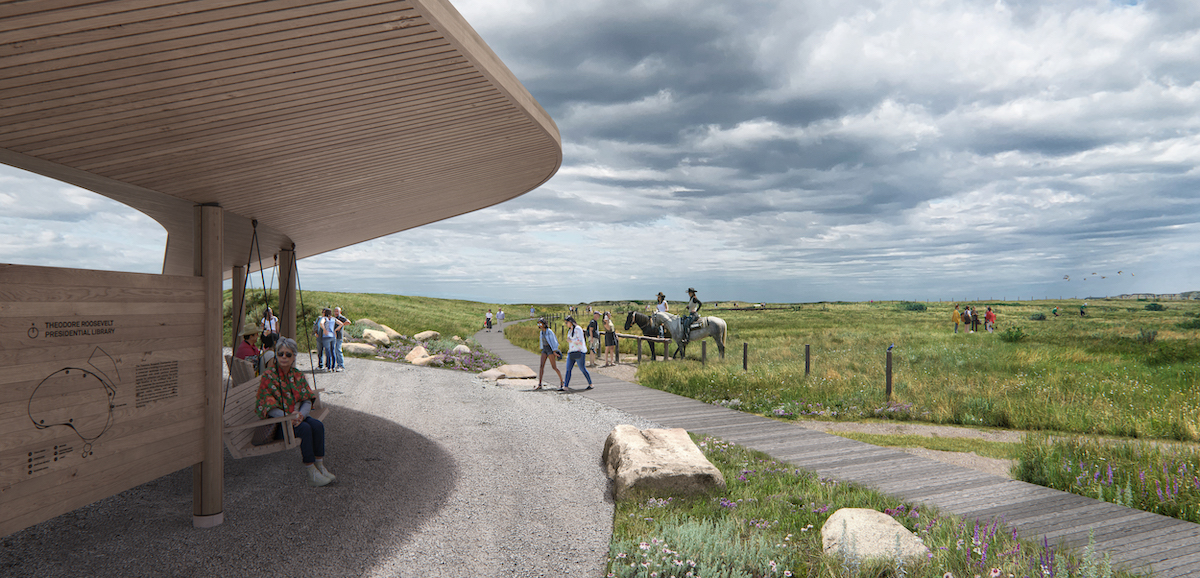
The new way starts with setting ambitious targets before there is a design, using those high ambitions as design-informing questions and design-guiding criteria. The best outcomes happen when big targets are set early and understood by the design team and the owner alike. These goals should not be applied as syrup to isolated projects but need to be integrated into the everyday business and project process, creating a culture of carbon-positive operations enterprise-wide. The seven key ingredients are grouped into three categories— human thriving, positive performance, and financial prosperity—that are always present in the best examples. The seven key ingredients are:
- Positive People: Health, wellness and resilience
- Positive Energy: Making more energy than is consumed
- Positive Total Carbon: Clean the air
- Positive Water: Total water balance
- Positive Materials: Healthy, equitable, circular (common materials framework, CMF)
- Positive Ecology: Restore nature
- Positive Revenue: Lowest total cost of ownership
One hundred forty years ago, Theodore Roosevelt had a vision that is being realized today. The Theodore Roosevelt Presidential Library is a cutting-edge example of what’s possible when all seven ambitions are pursued to the fullest from the beginning and integrated into the design at every phase and scale.

Just as T.R.’s legacy has extended for more than 100 years since his presidency, TRPL seeks to establish the next century of conservation by focusing on circularity and carbon-positive action that gives back, resulting in making more than is consumed rather than only taking resources. TRPL seeks to be a living library that embraces the Badlands, honors ecological systems, and provides a model for sustainable living.
1. POSITIVE PEOPLE – Learn it, live it
On Valentine’s Day 1884, T.R.’s wife, Alice Hathaway Lee, and his mother, Mittie Roosevelt, both died, in the same house. Devastated and in mourning, he fled to his recently purchased Badlands ranch to find peace and purpose. In North Dakota, he pursued a strenuous life of ranching amid the treasured landscape. His experiences later inspired a national conservation policy that shapes the American landscape to this day.
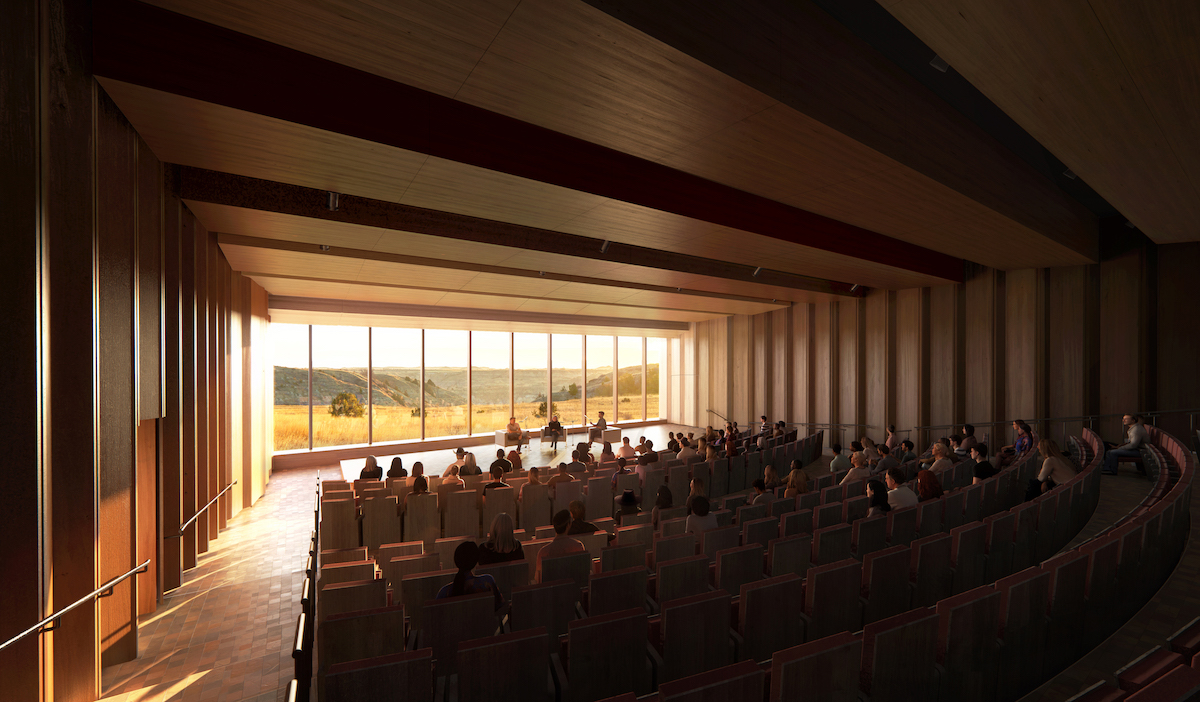
Because T.R. was inspired by the Badlands, the library is the landscape, which is a guiding principle of the project. The library rises from the bluff, just as he rose in the Badlands. Like him, the building is approachable, inviting, and provides connecting places. The entry draws the eye in and invites everyone into T.R.’s arena of action.
TRPL will use advanced digital technology for impactful storytelling, understanding the man beyond his presidency and discovering the journey that propelled T.R.’s conservation legacy. The goal for each visitor to do more than just learn about T.R but rather to learn from T.R. and live their own version of that story, using the natural environment to cultivate healthy, active citizens who rejoice in the outdoors, understand the value of conservation, and enter their own arena of community action with an evolved sense of interior and exterior systems.
TRPL sustainability integration will be visible upon arrival throughout the site and building. Signage and information will span the tour’s educational aspects. In consideration are an opt-in app to make the visitor experience carbon neutral and visible dashboards showing the real-time building status via on-site locations and TRPL’s website.
The site is accessible by foot, bicycle, and horseback – promoting engagement in the outdoors, including the nearby 144 miles of the Maah Daah Hey Trail system and a desired connection from the library site to the trail.
2. NET POSITIVE ENERGY – Make more than is consumed
T.R. got energy from his connection with the land. So too, TRPL will receive one hundred percent of cooling and most heating from 216 deep wells that extract energy from the land. Plus, renewable energy systems, on-site and off-site, will channel power from nature to energize the building. On-site energy storage provides resilience for people and place.
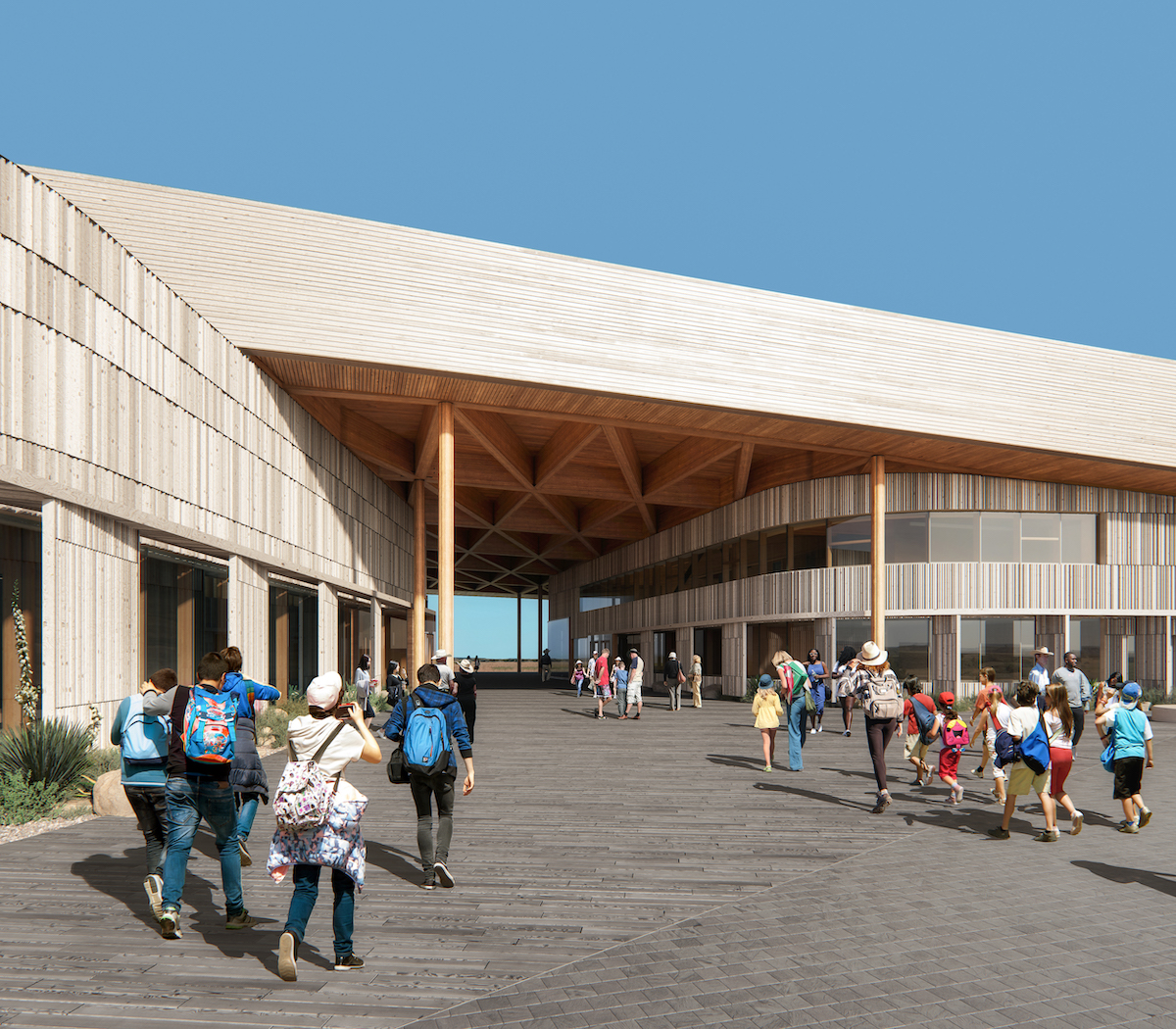
3. NET POSITIVE TOTAL CARBON – Clean the air
TRPL has a feasible plan to achieve total carbon-positive status at its opening, with further improvement over the life of the building. The library is expected to be carbon-positive, using just the project site for carbon neutrality and giving back benefits to the surrounding area in the future.
More than 100 acres of prairie land will be restored and managed. A first-of-its-kind collaboration is expected to yield a precedent-setting standard for soil organic carbon measuring. Over the life of this project, total carbon will be net positive; the facility will handle not only its own emissions but some of the surrounding community.
The project will demonstrate how growers and ranchers can capitalize on the new economic opportunity – carbon as a new cash crop of the future.
For example, a cutting-edge low-carbon concrete mix has been developed by a local supplier as part of the total embodied carbon plan. The goal is to teach and inspire both regional and global change, sparking demand for sustainable materials and design, backed by proven performance for net positive impact.
4. NET POSITIVE WATER – Renew and balance water use
Water is a crucial but limited resource, especially in the Badlands. TRPL has a total water balance design that will be net positive. Plantings on the roof will filter and polish rainwater and return it to local aquifers cleaner than when it fell from the skies. As water scarcity increases, TRPL will demonstrate how to live with limited water. We are at the beginning of what is believed to be a trend and growing challenge locally and around the world.
5. NET POSITIVE MATERIALS – Circular supply chain, red list avoidance
We have written a robust material conservation plan focusing on stopping waste at the source first, not just recycling construction debris. We’re emphasizing salvaged or reclaimed products and working on circularity by evaluating non-traditional ways to divert materials from landfills by focusing on reuse. We hope this effort will seed growth in the emerging national network of materials reuse providers.
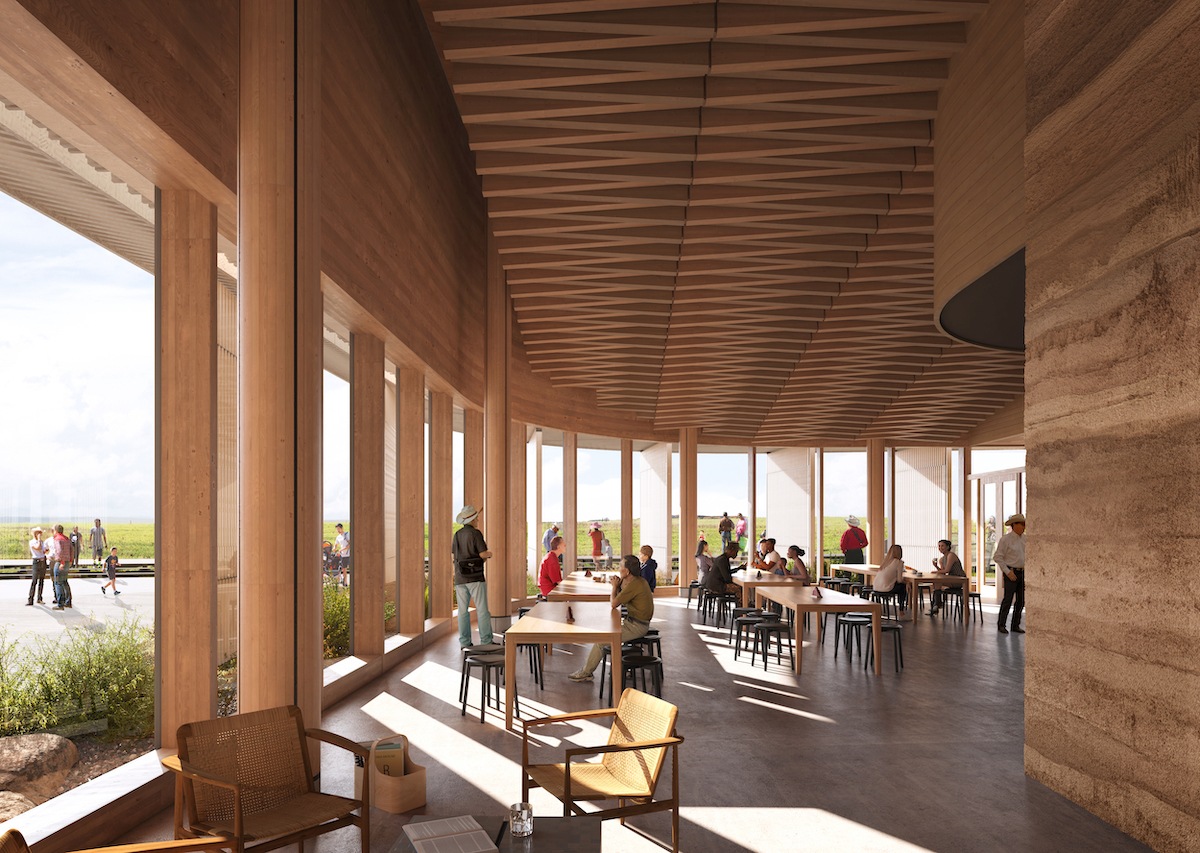
We are seeking an overhaul of the material supply chain that we anticipate will have ripple effects that are far-reaching and long-lasting. For example: the wood structure is carbon sequestering and a lower carbon material than other structural choices. Sourcing certified sustainable wood has been transformational for the team and suppliers. Holding to those criteria has facilitated sourcing work that would otherwise not happen, thus improving the supply chain for future projects. About 6,000 Red List chemicals from nearly all permanently installed products will be avoided. We give preference to materials with Declare labels or providing equivalent documentation. Already several suppliers have changed their products or obtained new Declare labels because we asked them to do so. Every product supplier has been asked to meet rigorous standards for environmental and human health, as well as to provide embodied carbon performance better than their industry average.
6. NET POSITIVE ECOLOGY – Restore nature
After the doors open in 2026 and the performance monitoring period is completed, the Theodore Roosevelt Presidential Library will be a “living” building, one that seeks to be better than having no building at all. TRPL will be a regenerative building that will give back, contribute, and connect occupants to light, air, food, nature, and community. TRPL will demonstrate an innovative way to achieve positive impact and interaction for humans and our natural systems.
A regenerative landscape will turn the library into a teaching tool for sustainable living. The building design is informed by the sweeping, naturally derived contours of the landscape. Organic architectural elements mimic the Badlands features and invite visitors to immerse themselves in the very experience that inspired T.R. to become our nation’s 26th president – discovery that catalyzed his passionate conservation of the Old West frontier.
The walking loop greets people coming from many interior exhibit themes to more than 20 exterior biophilic moments, connecting people to natural features and with cited research showing benefits to being outdoors. TRPL builds on the values of a rural, resource-limited site, adhering to the pioneering ideals of T.R.’s conservation efforts and the everyday efforts of local farmers and ranchers.
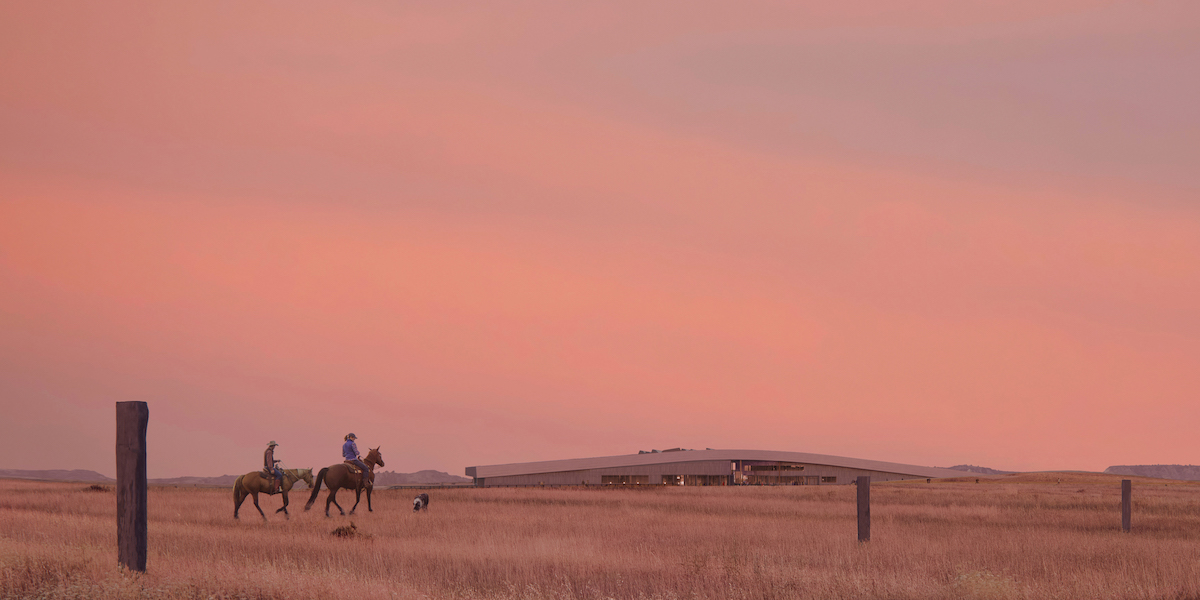
Land management, prairie restoration, and habitat conservation for animals and insects have been a major focus. Animals will benefit from a managed grazing plan. Pollinators will benefit from a more diverse and thriving assemblage of native flowering plants that will provide nectar and pollen resources critical for pollinator survival. The restored and improved native prairie will also help develop more healthy native soils, which over time will sequester carbon and develop a complex community of soil microbes and fungi, further improving the vegetation, habitat quality, and resilience of the landscape. Increasing native plant diversity will enable the landscape to better respond to unpredictable environmental factors and persistent climate change.
By opening day, about 400,000 native prairie plugs, grown from seeds hand-collected on the site, will have been planted on the roof and bioswales. When fully realized over the life of the project, plantings could number in the millions. We envision the potential for regional and national prairie restoration beginning with TRPL. The site will be a thriving sustainability example for others to follow and go well beyond current certification criteria.
7. PROSPER FINANCIALLY – Sustainability is profitable
Estimates show that the presidential library can be net revenue positive. A sustainable library design also ensures efficient operation of the entire building, allowing TRPL to take advantage of several new federal energy credits and tax incentives. With renewable systems, TRPL can be net-positive revenue after the investment payback period.
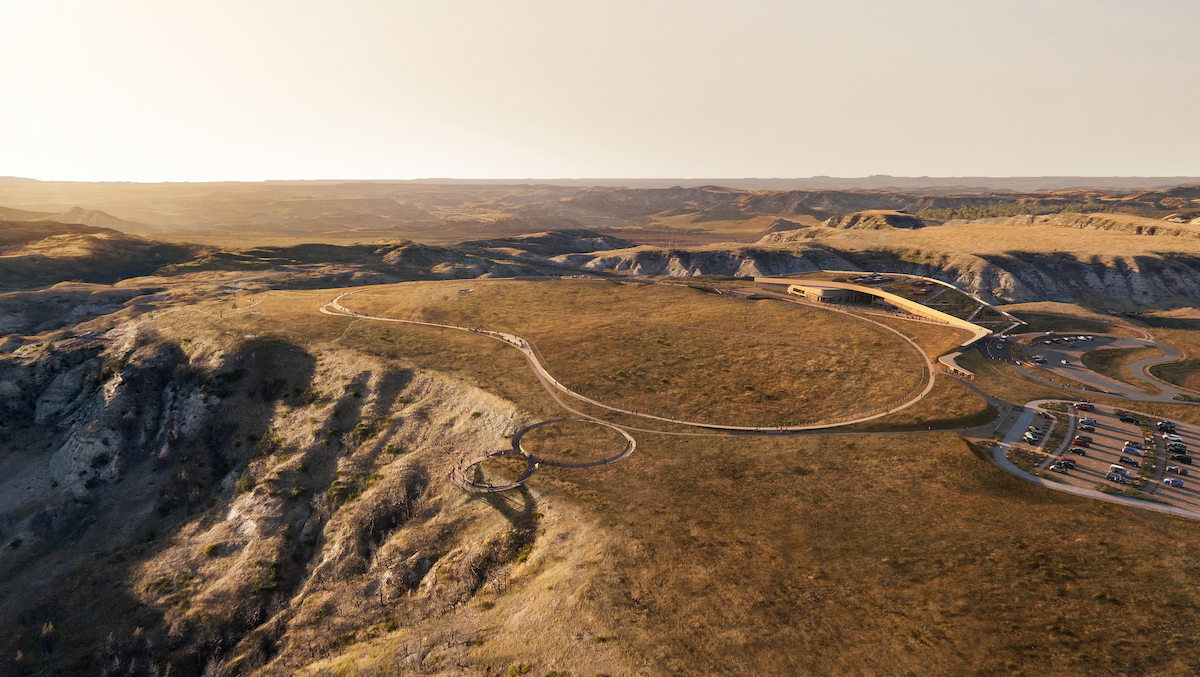
TRPL is rooted in sustainability investment, both in the physical construction of the library itself and in a replicable model of thinking, design, and development for future projects.
By looking at total cost of ownership, a different picture emerges. A business-as-usual building would cost about $10 million to operate for 30 years. The new approach outlined in this article can potentially be $5 million net revenue positive. The estimated net difference between worst- and best-case scenarios is potentially $15 million of avoided cost.
Clearly, sustainability is a great investment and a compelling business case.
PRESIDENTIAL QUALITY VERIFICATION – Checking the facts
TRPL is seeking to be total carbon positive, have a positive impact on human experience, and achieve positive total cost of ownership. TRPL is pursuing a sustainability triple ambition – LEED Platinum, SITES Platinum, and full Living Building Challenge certification, the last of which would be a first in North Dakota and a first among presidential libraries.
THE NEXT CENTURY: AN 'ARENA OF ACTION'
Throughout his adult life, Theodore Roosevelt invited everyone to be about action. To honor this legacy, we need to lead the change, adopting a business culture that embeds a living future as T.R. did. The Theodore Roosevelt Presidential Library seeks to establish a new, rigorous pursuit of sustainability, showing how to chart a new course as a teaching tool for regenerative design and sustainable living. TRPL will invite everyone to consider the long-term impact of today’s actions and the beauty that could be in our future, as determined by both regional and global acceptance of sustainable integration.
We’re not just building the Theodore Roosevelt Presidential Library. We’re building an idea that has a powerful and transformative impact on the way we live, learn, and work into the next century.
About the Author
Patrick Thibaudeau, LEED Fellow, Living Futures Accredited, is Principal Sustainability Officer at JLG Architects. His TEDx talk on the Theodore Roosevelt Presidential Library can be viewed here. For a focus on the site, see Parks & Rec Business Magazine (February 2024), “Breathing Life into the Badlands: The Theodore Roosevelt Presidential Library is a destination for conservation education.” To learn more about the Theodore Roosevelt Presidential Library, go to TRPL.
THEODORE ROOSEVELT PRESIDENTIAL LIBRARY BUILDING TEAM
Architect of record: JLG Architects
Design architect/Design landscape architect: Snøhetta
Landscape architect of record: Confluence
Construction manager: JE Dunn Construction
Related Stories
Libraries | Oct 30, 2024
Reasons to reinvent the Midcentury academic library
DLR Group's Interior Design Leader Gretchen Holy, Assoc. IIDA, shares the idea that a designer's responsibility to embrace a library’s history, respect its past, and create an environment that will serve student populations for the next 100 years.
Libraries | Sep 12, 2024
How space supports programming changes at university libraries
GBBN Associate Sarah Kusuma Rubritz, AIA, uses the University of Pittsburgh's Hillman Library to showcase how libraries are transforming to support students’ needs.
Libraries | Aug 1, 2024
How current and future trends are shaping the libraries of tomorrow
Over the last few years, public libraries have transitioned from being buildings that only store and lend books to being fully featured community centers.
Libraries | Apr 24, 2024
New mass timber Teddy Roosevelt library aims to be one with nature
On July 4, 2026, the Theodore Roosevelt Presidential Library is scheduled to open on 93 acres in Medora, a town in North Dakota with under 130 permanent residents, but which nonetheless has become synonymous with the 26th President of the United States, who lived there for several years in the 1880s.
Giants 400 | Feb 8, 2024
Top 20 Public Library Construction Firms for 2023
Gilbane Building Company, Skanska USA, Manhattan Construction, McCownGordon Construction, and C.W. Driver Companies top BD+C's ranking of the nation's largest public library general contractors and construction management (CM) firms for 2023, as reported in Building Design+Construction's 2023 Giants 400 Report.
Giants 400 | Feb 8, 2024
Top 30 Public Library Engineering Firms for 2023
KPFF Consulting Engineers, Tetra Tech High Performance Buildings Group, Thornton Tomasetti, WSP, and Dewberry top BD+C's ranking of the nation's largest public library engineering and engineering/architecture (EA) firms for 2023, as reported in Building Design+Construction's 2023 Giants 400 Report.
Giants 400 | Feb 8, 2024
Top 50 Public Library Architecture Firms for 2023
Quinn Evans, McMillan Pazdan Smith, PGAL, Skidmore, Owings & Merrill, and Gensler top BD+C's ranking of the nation's largest public library architecture and architecture/engineering (AE) firms for 2023, as reported in Building Design+Construction's 2023 Giants 400 Report.
Giants 400 | Nov 6, 2023
Top 65 Cultural Facility Construction Firms for 2023
Turner Construction, Clark Group, Whiting-Turner, Gilbane, and Holder Construction top BD+C's ranking of the nation's largest cultural facilities sector general contractors and construction management (CM) firms for 2023, as reported in the 2023 Giants 400 Report. Note: This ranking includes revenue from all cultural building sectors, including concert venues, art galleries, museums, performing arts centers, and public libraries.
Giants 400 | Nov 6, 2023
Top 60 Cultural Facility Engineering Firms for 2023
KPFF, Arup, Thornton Tomasetti, Tetra Tech, and WSP head BD+C's ranking of the nation's largest cultural facilities sector engineering and engineering architecture (EA) firms for 2023, as reported in the 2023 Giants 400 Report. Note: This ranking includes revenue from all cultural building sectors, including concert venues, art galleries, museums, performing arts centers, and public libraries.
Giants 400 | Nov 6, 2023
Top 110 Cultural Facility Architecture Firms for 2023
Populous, Gensler, HGA, DLR Group, and Quinn Evans top BD+C's ranking of the nation's largest cultural facilities sector architecture and architecture engineering (AE) firms for 2023, as reported in the 2023 Giants 400 Report. Note: This ranking includes revenue from all cultural building sectors, including concert venues, art galleries, museums, performing arts centers, and public libraries.


